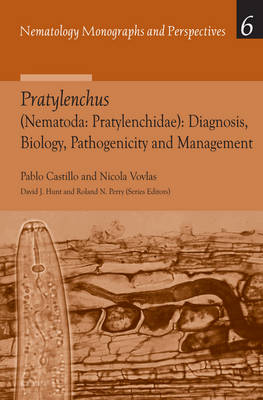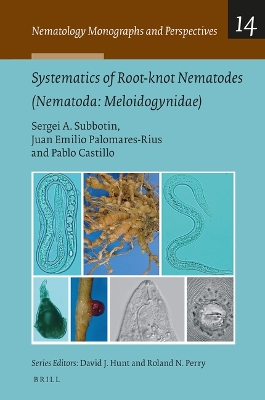Nematology Monographs and Perspectives
3 primary works • 4 total works
Book 3
Bionomics and Identification of the Genus Rotylenchus (Nematoda: Hoplolaimidae)
by Pablo Castillo and Nicola Vovlas
Published 1 March 2005
This book presents information on various aspects on the importance of Rotylenchus spp. in agricultural crops, their distribution, biology, pathogenicity to vegetables, fruit and forest trees, ecology, and different management strategies, including chemical control, crop rotation, and biological control. Diagnosis, descriptions, morphometric and cluster analyses, as well as comprehensive tabular and dichotomous keys are also included.
Book 6
Pratylenchus (Nematoda: Pratylenchidae): Diagnosis, Biology, Pathogenicity and Management
by Pablo Castillo and Nicola Vovlas
Published 1 January 2007
Root-lesion nematodes of the genus Pratylenchus are recognised worldwide as one of the major constraints of crops of primary economic importance. Pratylenchus spp. comprises around 70 nominal species of worldwide distribution which parasitize a wide variety of plants. The book consists of ten chapters and presents summarised and specialised information concerning the importance of the Pratylenchus species in: agricultural crops, and their world distribution (chapter 1); taxonomy, systematic, general morphology and diagnostic traits of Pratylenchus spp. including new technologies based on biochemical and molecular analyses (chapters 2-6); biology, epidemiology, ecology, host-parasite relationships, and pathogenicity (chapters 7-9). Finally, it illustrates different management strategies for Pratylenchus species, including, crop rotation, host-plant resistance, chemical control, soil solarisation, and biological control (chapter 10).
Book 14
Systematics of Root-knot Nematodes (Nematoda: Meloidogynidae)
by Sergei A. Subbotin, Juan Emilio Palomares Rius, and Pablo Castillo
Published 4 August 2021
Root-knot nematodes of the genus Meloidogyne represent one of the most damaging and agricultural important group of plant-parasitic nematodes. These nematodes are obligate sedentary endoparasites infecting most species of higher plants and have a cosmopolitan distribution. Annual worldwide economic losses due to nematode infection of crops have been estimated at several hundred billion US dollars. This book is the first complete illustrated compendium of root-knot nematode species and contains 98 species descriptions with comprehensive diagnoses, information on biology, plant-hosts, pathogenicity, symptoms, distribution and biochemical and molecular diagnostics. It also includes introductions into morphology, biology, biogeography, genomics, phylogeny and host-parasite relationships of root-knot nematodes.



